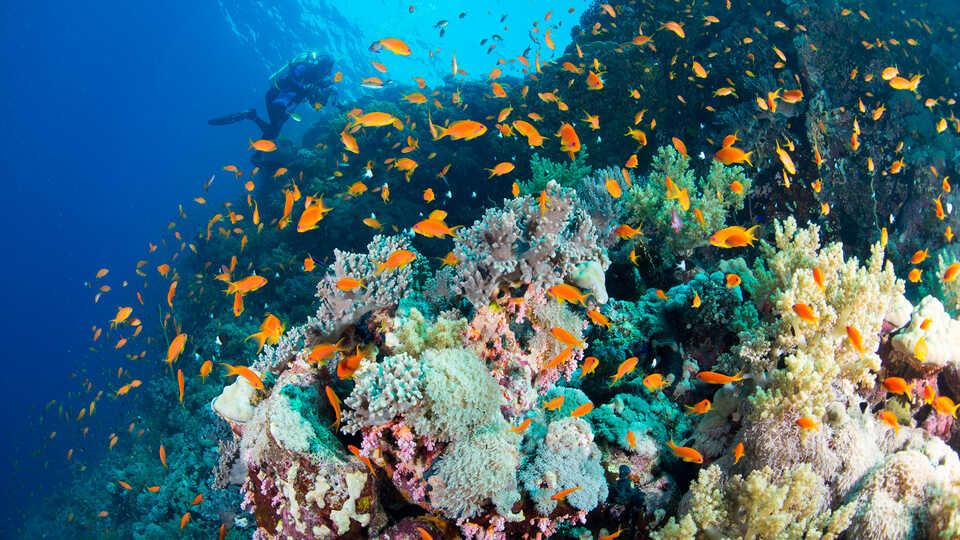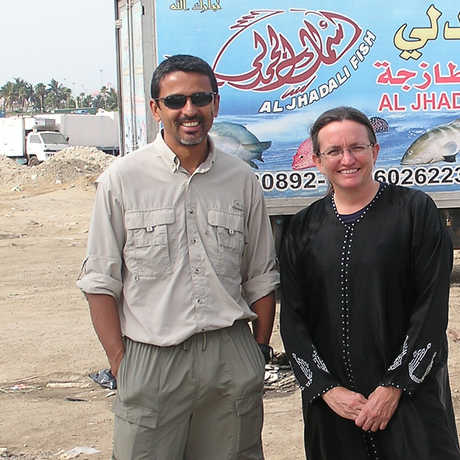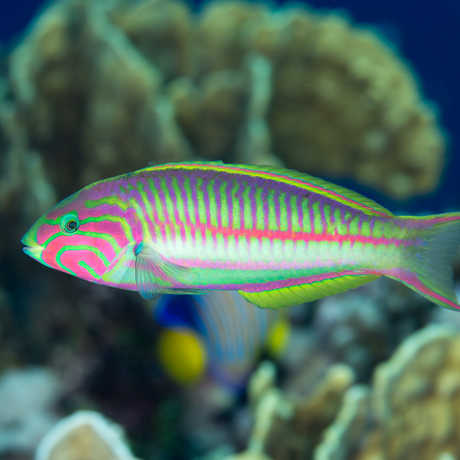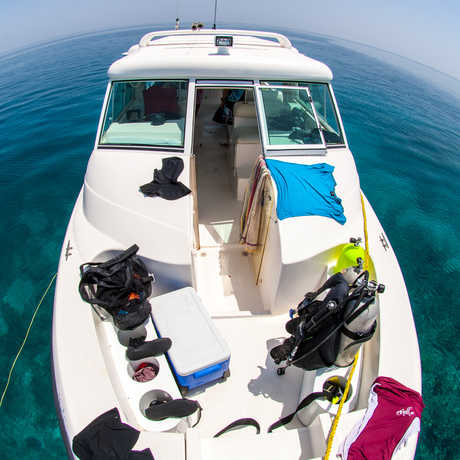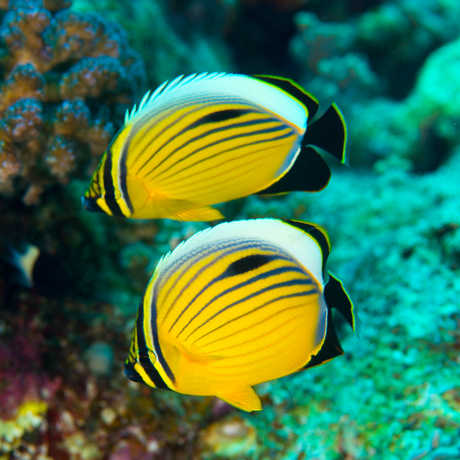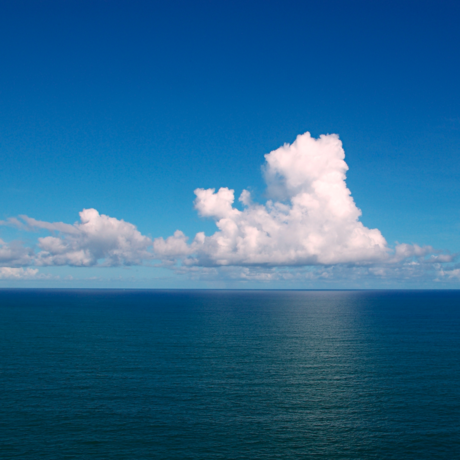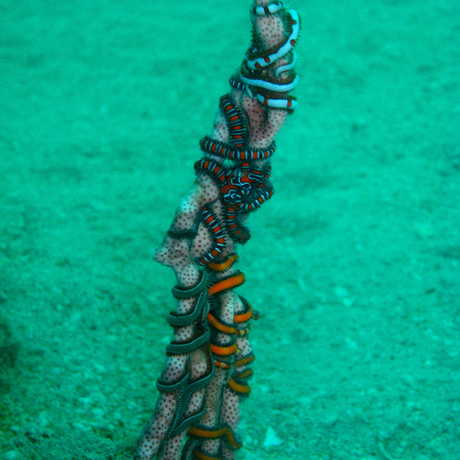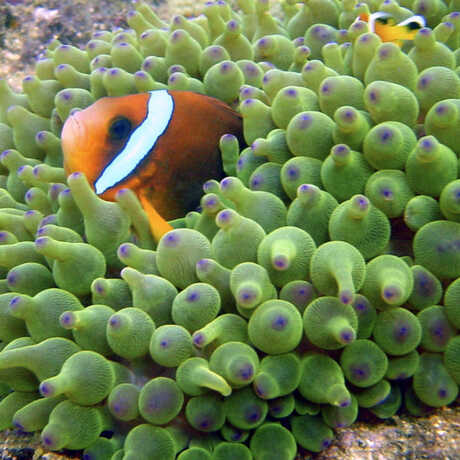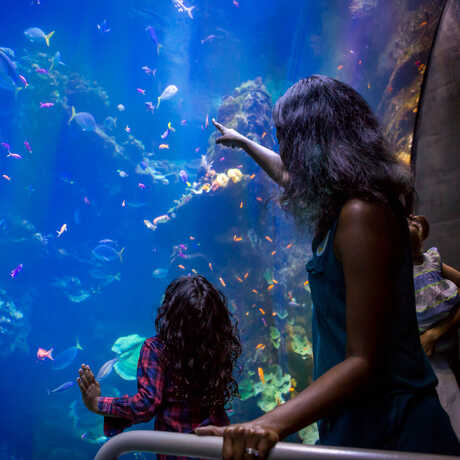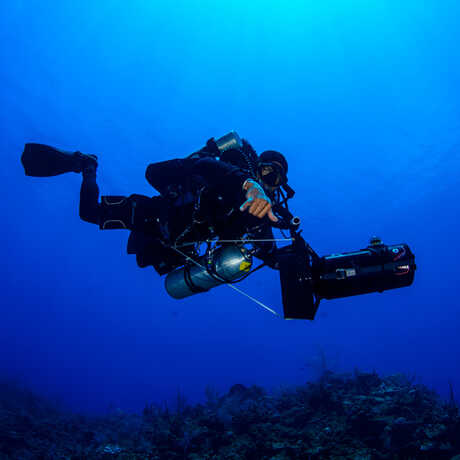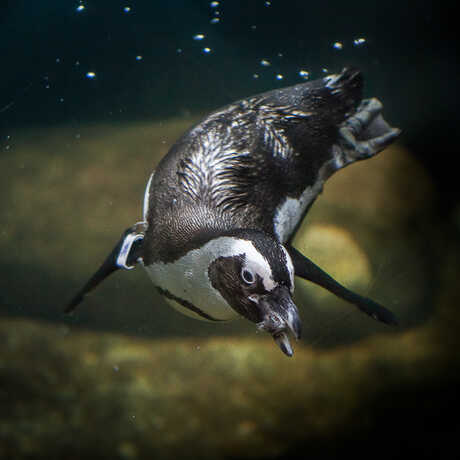The Academy's Red Sea expedition was partly funded by National Geographic and included researchers Luiz Rocha, Associate Curator in the Department of Ichthyology, and Terry Gosliner, Senior Curator of Invertebrate Zoology and Geology. Collaborators included researchers from King Abdullah University in Saudi Arabia, James Cook University in Australia, and the University of Hawaii. Pictured: Luiz Rocha and former Academy post-doc Michelle Gaither.
